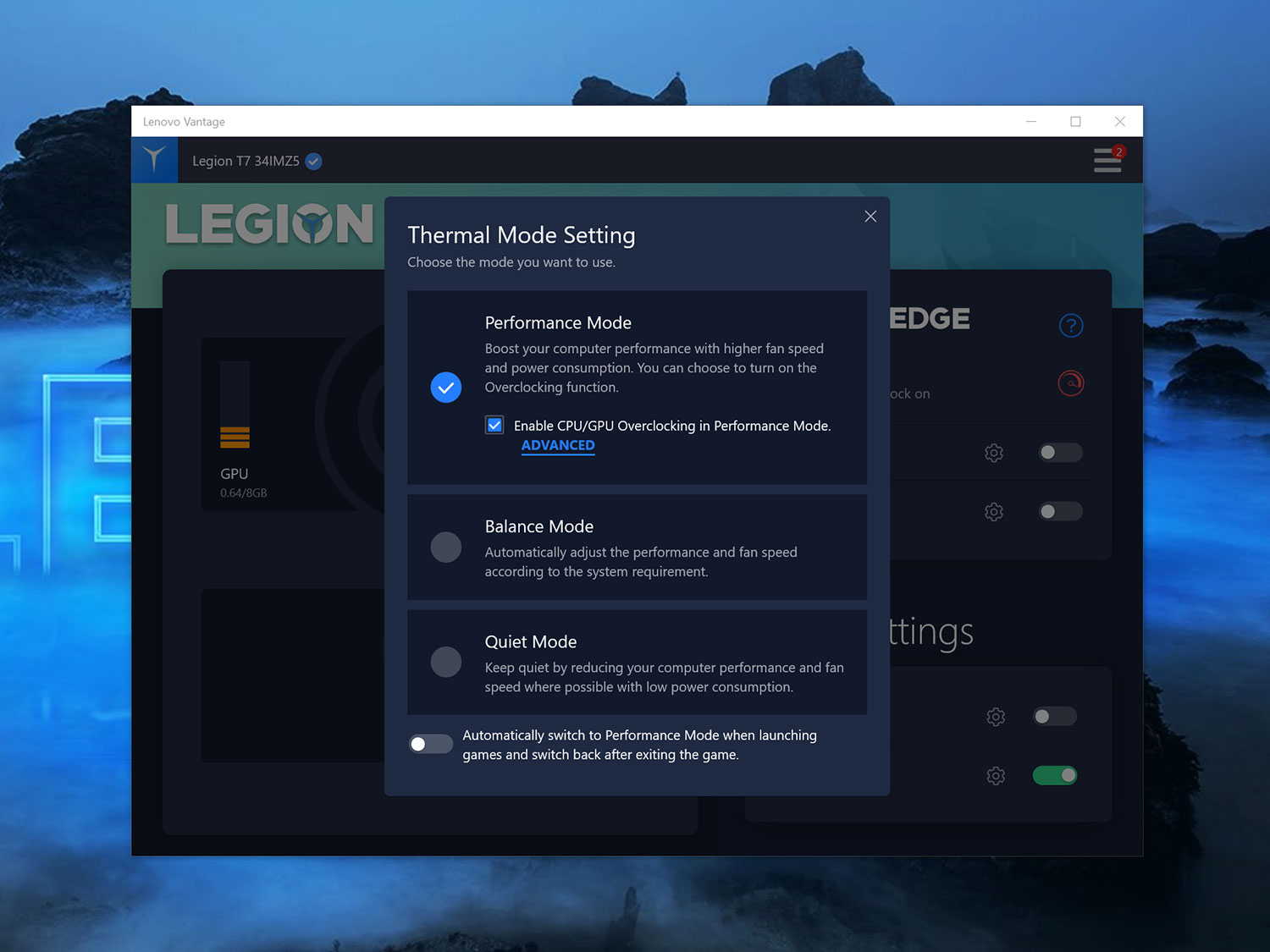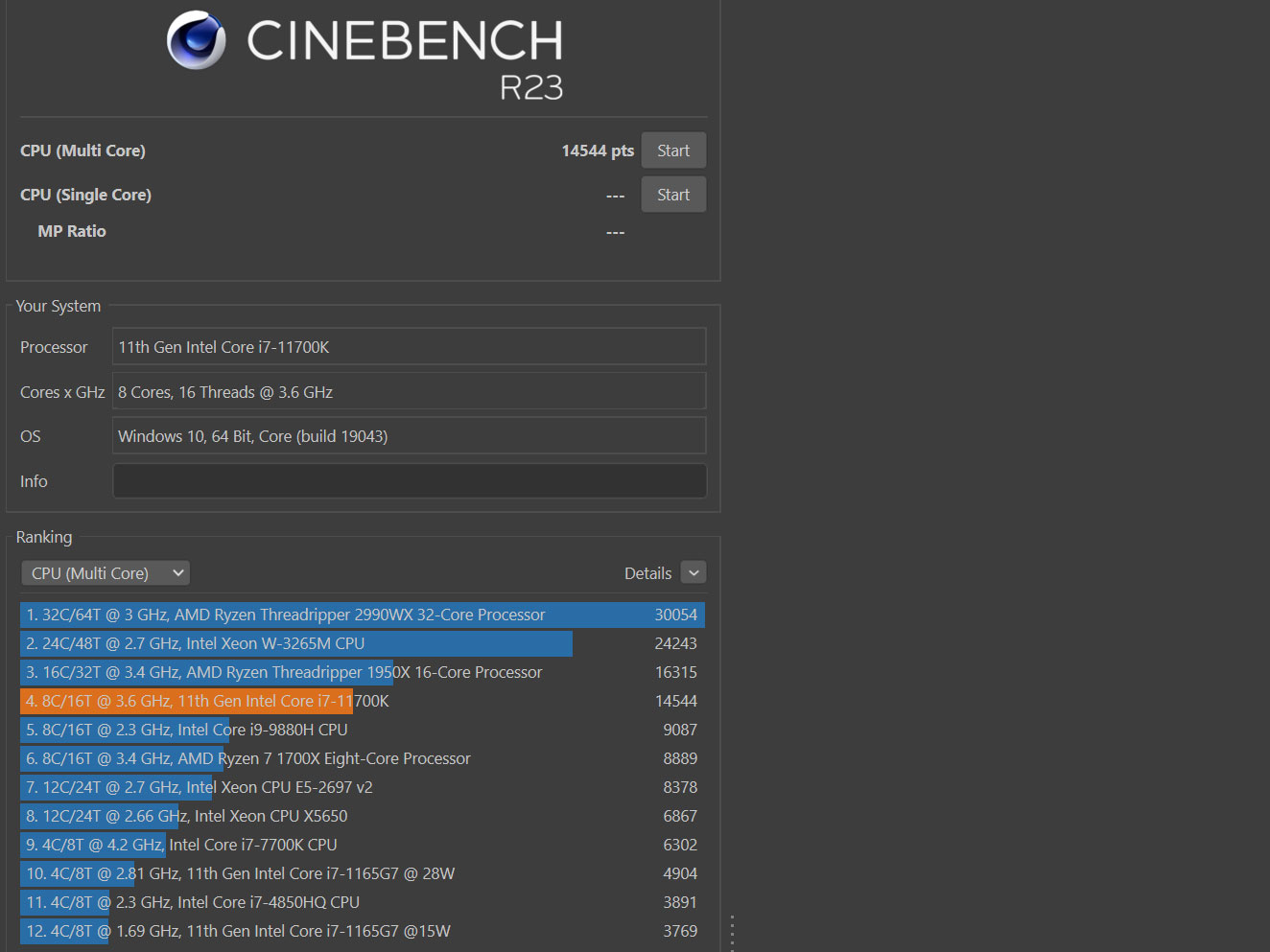
Pre-built Gaming PCs have become more attractive than ever in a tough supply-chain market, as OEMs often get critical components such as graphics cards more quickly and at lower prices than consumers.
However, Gaming PC buyers are often wary about whether the OEM’s gaming computer is as extensible, and therefore future-proof, as a DYI PC. We’ve taken the Lenovo Legion Tower 7i for a spin and took a close at these critical questions, in addition to the performance metrics.
Configuration as tested and options
Our specific test unit is equipped with the Intel i7-11700K CPU, 16GB of RAM (Kingston DDR4 @ 3,192 MHz), a GeForce RTX 3070 with 8GB, and a 1TB Samsung SSD (model MZVL21T0HCLR-00BL7). We estimate the price to be around $2400.
| 11th Generation Intel® Core™ i7-11700KF Processor (3.60 GHz, up to 5.00 GHz with Turbo Boost, 8 Cores, 16 Threads, 16 MB Cache) |
| 16 GB DDR4 3200MHz (2 x 8 GB) |
| 1 TB PCIe SSD |
| NVIDIA® GeForce® RTX™ 3070 8GB |
| 802.11AX (2 x 2) & Bluetooth® 5.0 |
| 170W Liquid Cooling |
| 650W PSU |
I’ve seen more CPU options for this tower, including the Intel i7-11700KF (no iGPU) and i9-10900K. There are also other GPU options, including the RTX 2070 Super (8GB), RTX 3060 (12GB) and RTX 3080 (10GB).
That said, I would expect Lenovo to update this model with newer CPU and GPUs as they come out, so keep an eye out for the latest specs. This design has been around since Intel’s 10th generation CPUs.
Industrial design


The chassis and overall design of a Gaming Desktop PC are essential because many people keep their tower for years and replace the internal components over time. For example, I own an Antec Lanboy air red/black chassis purchased in 2011, now impeccably hosting the latest Intel Gen12 platform.
The 34-liters, 27.6 lbs Legion Tower 7i has a neat design with an outstanding aesthetic balance between “classic” and “gaming” if you turn the LED lights on. Our unit also features the optional transparent side cover, which opens the opportunity for showing off the internal components.


The left side of the case is a solid metal panel that hides the cables management area. Overall, I find the cables neatly hidden, and the organization is pretty good. You’ll need a Philips screwdriver to open the side panels, but the screws are almost flush with the panel.

Lighting-wise, the internal 120mm fans (chassis+CPU cooler) have multiple RGB LEDs that Lenovo’s Vantage software can control. It looks agreeable out of the box, especially with the clear side panel. I didn’t change it at all but you can.

Cooling
The three-fans array at the front is a trendy feature, and you can find that kind of design in DIY cases such as the CORSAIR Carbide, MUSETEX Phantom, and more. So out of the box, the Legion Tower 7i does somewhat look like a custom-built Gaming PC.


The front and top of the case are made of a rigid metallic mesh that’s great for cooling and air circulation. In practice, the airflow is as good as leaving the chassis open, but it looks spotless while protecting the components.
The back is also well ventilated down to the perforated Expansion Slot Covers. It’s the kind of details where many OEMs might cheap out, but I appreciate Lenovo’s attention to detail.
Air is also coming in from the bottom, so Lenovo included a dust filter to catch most of the dust. That’s super-useful if your PC is on the floor, but even on a desk, that’s a significant dust ingress point.

The pre-installed CPU liquid cooler with two 120mm fans makes the internal volume look cleaner while improving cooling vs. a heatsink. The more expensive and powerful your CPU is, the more you want (need) liquid cooling.
The large and very quiet GPU also has more than adequate air-colling, and is even held in place with a beefy GPU bracket that would be very useful during transportation to a LAN party. A single 8-pin power connector powers it.

Our 650W Gold PSU gets its own cooling region and is a bit insulated from the rest of the case to avoid having the PSU heat leak into the rest of the chassis. If you buy a more powerful GPU or CPU, your PSU might be a little different to match the power requirements of your system.
Expansion and upgrades
What I like about this Legion Tower 7i is that it uses standard components through and through. Sure the standard full-size ATX motherboard is explicitly made for Lenovo, but you could easily swap it out for another one, and it would all work fine.
Using standard components is hugely important to many Gamers because some OEMs use proprietary designs incompatible with retail PC components, which might severely limit critical updates like motherboard or GPU.

Inside, you’ll find two 2.5″ SATA SSD/HDD slots with cables ready to be connected (nice!). I don’t use any SATA drives these days, but they are convenient from a GB/$ point of view if you need a lot of storage.
There are two 3.5″ SATA slots if you’re using mechanical drives or anything that fits in the same space. In total, there are six SATA connections on the motherboard, in case you need more.

For PCIe SSDs, the pre-installed drive is located close to the CPU slot, and there’s a second m.2 connector (two total) at the bottom of the motherboard.
If you need to add more RAM, there are a total of four slots, which is very much the standard for non-workstation desktop motherboards. 16GB should be okay for gaming purposes, and for DCC work, I’d bump that to 32GB or more.
Ports


There are usually no worries about the number of available ports on a desktop computer, and there’s plenty here located at the back and top. However, I would have liked to see at least one Thunderbolt (TB) port to connect to a TB Dock.
Sometimes you might want to use this kind of speedy computer as a workstation and having higher external connections is ideal.
The Legion Tower 7i does not come with an external WiFi antenna, but WiFi 6 is supported to ensure great wireless connectivity if your router supports it. Alternatively, I like to connect gaming computers to the wired network port to get the lowest latency.
System performance
As you might have inferred from the specifications of our test unit, the CPU and graphics performance is very good for its category and reflects the quality of the components. Thanks to the excellent cooling design, we expect this CPU/GPU combo to perform as well as thermals (+ambient temperature) and power will allow.



By default, the chassis is very quiet, even when the GPU is at 100% for extended periods. If you want to, you could try to max out the fans and increase the noise, but in practice, I don’t think that’s necessary at all.
The 3DMark numbers show this configuration lands in the top percentile of all tests, and that’s entirely expected. If you want to use it as a workstation, I’ve added the Cinebench R23 benchmark (software 3D rendering).

As we said earlier, if you need higher CPU performance, look at the Core i9 option, or wait for an Intel 12th generation Alder Lake version as we got great numbers with them.
The SSD storage also performs quite well for a single drive configuration and is well in line with what we expect for this price range. I’m not aware of any RAID0 option, but that’s typically not high on the gamers’ priority list as any additional dollars should ideally go to a faster GPU.

Conclusion
The Lenovo Legion Tower 7i makes me look at pre-built gaming PCs positively. I have always built my PCs from scratch, and of course, DIY always gives you 100% control that no OEM can match.
However, this gaming PC is very well built, and I’d be happy with this Lenovo design, and I think many customers and potential customers would agree. This PC fulfills all the critical design and expansion considerations I’m looking for.
The performance matches what we expect from our configuration, and the computer’s speed is not held back by cooling or any other technical choice. We’re seeing a performance at the limit of what the CPU/GPU/RAM combo can do. If budget allows, you can opt for an even higher GPU/CPU configuration.
Given the PC aftermarket situation, it might simply be easier and cheaper to procure these components via this Lenovo PC instead of building your computer.
Highs
- Very good chassis design
- Great performance in its market segment
- Efficient and quiet cooling system
- Compatible with aftermarket components
Lows
- No Thunderbolt port
Rating + Price
- Rating: 9.4/10
- Price: ~$2400
Filed in . Read more about Gaming Pc, Intel, Lenovo, Lenovo reviews and NVIDIA.